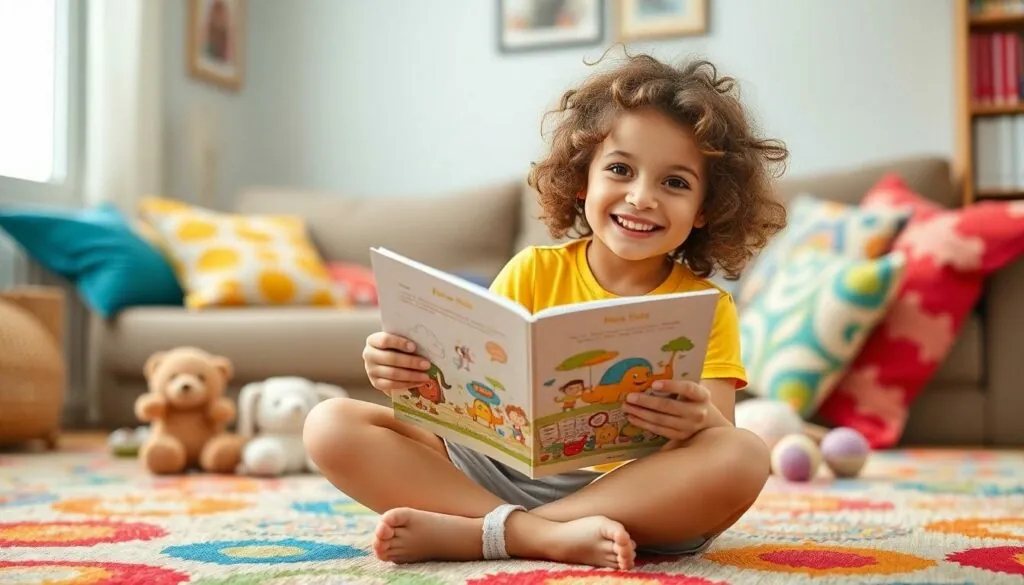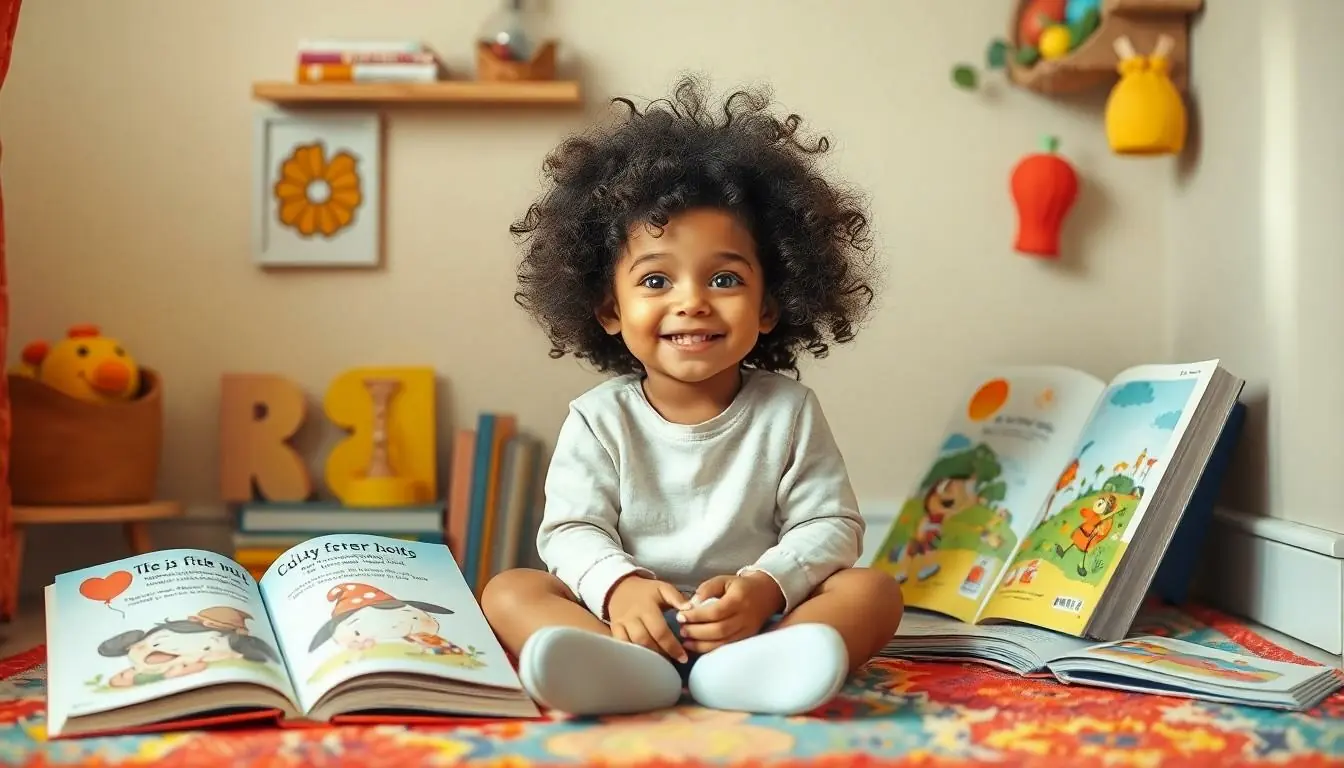Table of Contents
TogglePuns have a special magic that can turn reading into a delightful adventure for kids. Imagine the giggles and grins as they discover the playful twists of language that make words dance off the page. These clever little jokes not only tickle their funny bones but also spark creativity and boost language skills.
Understanding Reading Puns for Kids
Reading puns introduce children to playful language elements. These clever wordplays can enhance enjoyment while reading.
What Are Puns?
Puns are humorous plays on words that exploit multiple meanings or similar-sounding words. Kids encounter puns in everyday situations, often leading to giggles. They might hear puns in jokes, storybooks, or even cartoons. An example is, “Time flies like an arrow; fruit flies like a banana.” Puns create a connection to language that educational texts often overlook. Recognizing and understanding puns helps develop critical thinking.
Importance of Puns in Language Development
Puns play a significant role in language development for children. Engaging with puns strengthens vocabulary and comprehension skills. Playing with sounds and meanings encourages creativity in communication. Children learn to recognize nuances in language by exploring puns. Humor also aids memory retention, making learning more enjoyable. Integrating puns into reading promotes a positive attitude towards literature and education. Even simple puns can spark interest in reading and language exploration.
Benefits of Reading Puns for Kids
Reading puns offers numerous advantages for children, enriching their language experience and enhancing their overall enjoyment of literature.
Enhancing Vocabulary
Vocabulary expansion occurs naturally through exposure to puns. Children encounter diverse words and phrases while engaging with playful language. Understanding puns requires recognizing multiple meanings and contexts, which promotes deeper comprehension. For instance, encountering a pun alongside an illustration can reinforce the meaning of new words. As kids appreciate witty phrases, they develop a keen sense of wordplay. This connection increases their desire to learn and use new terms in conversation. Ultimately, reading puns supports vocabulary growth while making learning enjoyable.
Encouraging Creativity and Imagination
Creativity flourishes when kids explore puns. Engaging with wordplay stimulates imaginative thinking, encouraging them to create their own jokes and riddles. This playful approach to language nurtures insight as children learn to see connections between seemingly unrelated ideas. Drawing upon humor enhances their storytelling abilities as they craft narratives that include clever twists. Fostering a love for puns inspires kids to experiment with language, leading to original expressions and fresh perspectives. Engaging with puns can ignite a passion for creative writing, allowing children to explore their unique voices.
Popular Themes in Children’s Puns
Children’s literature often includes playful themes that resonate with young readers. Two popular themes are animal puns and food puns.
Animal Puns
Animal puns engage children with clever wordplay related to their favorite creatures. These puns not only entertain but also introduce fun vocabulary. For instance, “What do you call a bear with no teeth? A gummy bear.” This type of humor helps children understand language nuances. Through these jokes, kids relate to animals, enhancing their interest in nature and reading. Exposure to animal-related puns encourages curiosity about wildlife, fostering a love for learning.
Food Puns
Food puns offer a tasty twist on language that captivates kids’ interest. They blend humor with familiar topics, like snacks and meals. An example includes, “Why did the banana go to the doctor? It wasn’t peeling well.” Such playful phrases make reading more enjoyable and memorable. Food puns also enhance creativity, inspiring children to invent their own funny phrases. By connecting humor to food, these puns make literacy more appealing and relatable for young readers.
Recommended Books Featuring Puns
Numerous books feature delightful puns that appeal to young readers. These engaging titles combine humor with language learning, making reading enjoyable for kids.
Classic Titles
“Caps for Sale” by Esphyr Slobodkina stands out for its playful wordplay and charming illustrations. Children resonate with its clever puns while following the amusing antics of a cap-selling peddler and mischievous monkeys. “Knuffle Bunny” by Mo Willems showcases whimsical language through its endearing story, creating laughter and memorable moments. “The Book with No Pictures” by B.J. Novak ensures giggles with its clever use of silly words and sounds that encourage kids to embrace playful storytelling. Each classic title serves as an excellent way to introduce young readers to the joy of puns.
New Releases
“Super Potato” by Artur Laperla presents a fresh take on superhero adventures, enriched by fun wordplay that entertains and excites children. “The Very Impatient Caterpillar” by Ross Burach captivates with its humorous exploration of patience, filled with puns that keep kids engaged. Furthermore, “Chicken Talk” by Patricia McLaine invites readers to enjoy clever animal phrases embedded within its storyline, encouraging interaction and laughter. These new releases offer contemporary humor, helping young readers develop a love for puns and language.
Tips for Introducing Puns to Kids
Introducing puns to kids can create a delightful experience that enhances their reading skills. Focus on making connections between playful language and children’s interests.
Making It Fun
Create a lively atmosphere when discussing puns. Utilize humor through silly voices or funny expressions while sharing pun-filled stories. Reading aloud from books rich in puns keeps kids engaged and encourages laughter. Encourage children to share their favorite jokes or puns, fostering a sense of community and participation. Share pun-based games or challenges that evoke creativity, turning learning into an enjoyable adventure.
Engaging in Interactive Activities
Incorporate crafts and activities that enhance the understanding of puns. Use drawings that illustrate punny phrases to reinforce meaning. Crafting simple stories that involve puns allows kids to express themselves creatively. Engage children with pun-themed scavenger hunts, where they search for items related to specific puns. Utilize digital resources, such as apps featuring pun games, to modernize the experience. These interactive activities deepen appreciation for puns while making learning entertaining.
Conclusion
Reading puns opens up a world of joy and creativity for kids. These playful language twists not only enhance vocabulary but also make learning fun and engaging. By introducing children to the whimsical side of language, parents and educators can cultivate a love for reading that lasts a lifetime.
Through laughter and imagination, puns encourage kids to explore their unique voices and develop their storytelling abilities. With the right books and interactive activities, every reading session can become an adventure filled with humor and insight. Embracing puns in children’s literature is a delightful way to foster a deeper appreciation for language and learning.








